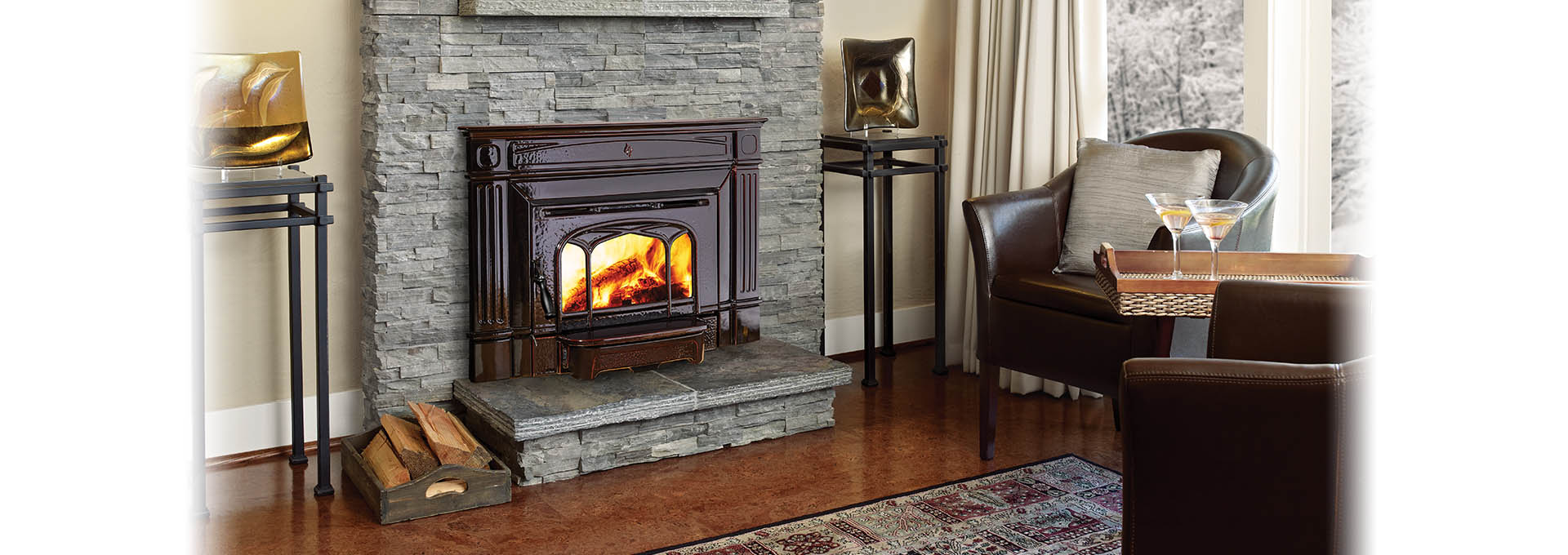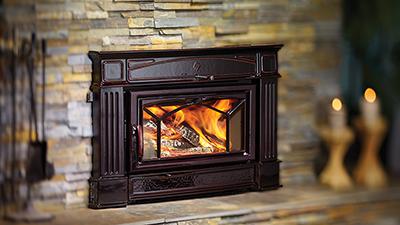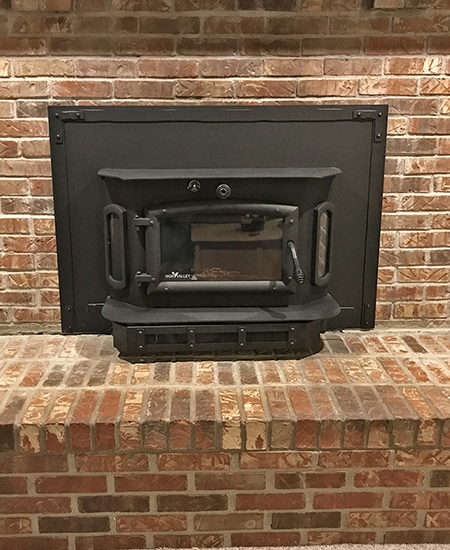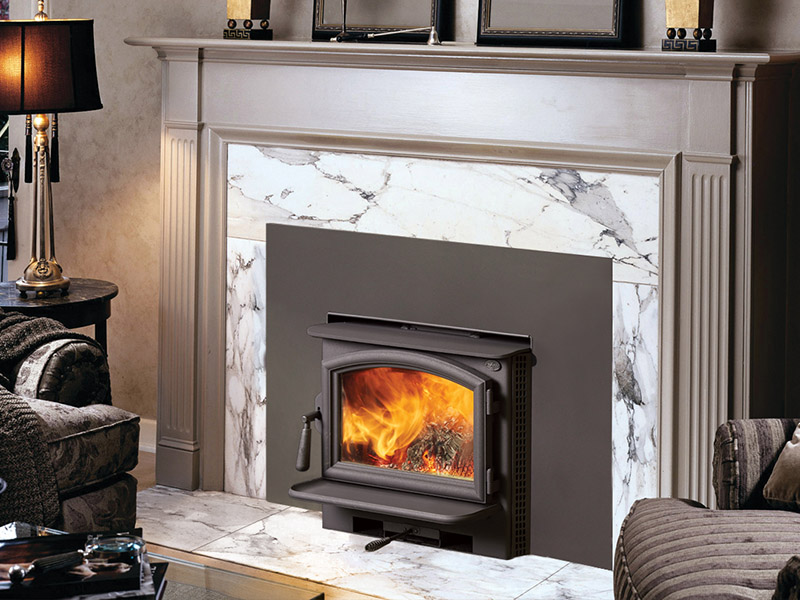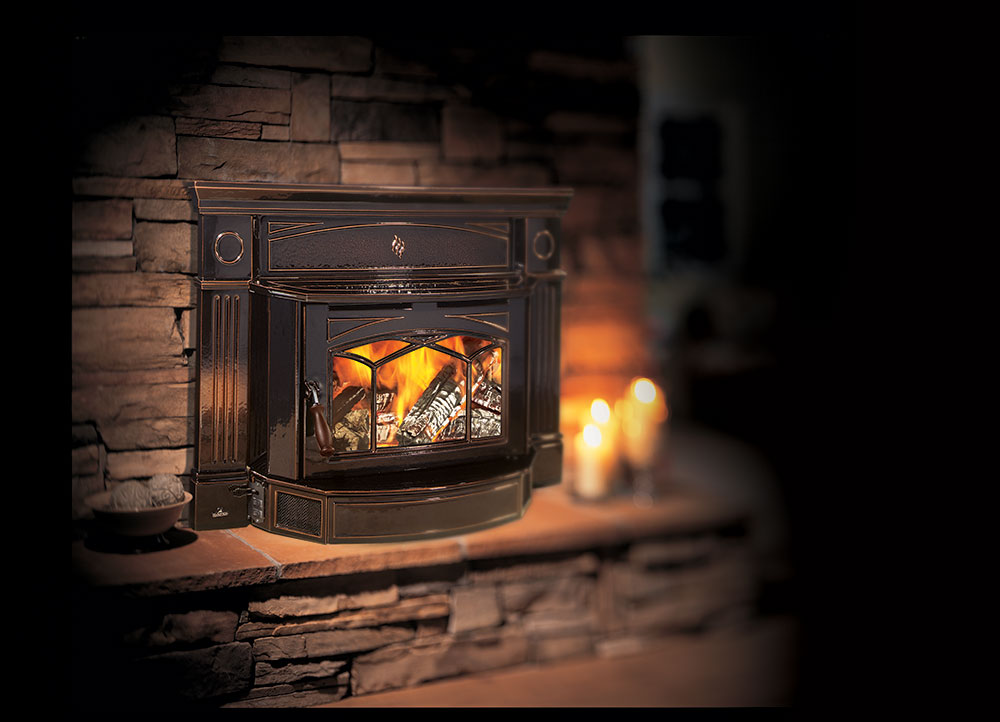Adding a cast iron stove insert to your fireplace brings a balance of efficiency, charm, and practicality. Many older fireplaces are built more for looks than heat output, leaving much of the warmth lost through the chimney. A cast iron insert fits inside an existing fireplace opening and helps contain, distribute, and radiate heat more effectively. It’s a smart upgrade for anyone looking to make better use of their hearth.
What Is a Cast Iron Stove Insert?
A cast iron stove insert is a sealed firebox designed to fit into an existing fireplace. It uses cast iron for its durability and excellent heat retention. Unlike traditional open fireplaces, which lose much of their warmth, inserts help capture heat and direct it into the room. Most include a front-loading door and glass window so the fire is visible while it burns safely behind a closed panel.
These inserts often include features like blowers, air-wash systems for cleaner glass, and secondary burn technology for improved combustion. This means they burn wood more completely, producing less smoke and more usable heat. Some models are designed to burn wood, while others may run on gas or pellets depending on your preference.
The purpose of the insert is not just heat but efficiency. Traditional fireplaces often waste energy, while an insert can turn your fireplace into a serious heating unit. By upgrading to a cast iron model, you get the look of a classic stove with the heating power of a more modern system, making it a worthwhile addition to many homes.
Why Choose Cast Iron?
Cast iron has been used in stoves for centuries because it holds and radiates heat so well. Once it’s warmed up, it continues to emit heat long after the fire dies down. This makes it a good option for maintaining room temperature over longer periods without constant tending or refueling.
Durability is another key reason to go with cast iron. It’s built to last and can withstand repeated cycles of intense heat and cooling without warping or cracking. With proper care, a cast iron insert can last for decades, giving you a long-term solution to your heating needs.
On top of function, cast iron adds a strong visual appeal. The material allows for detailed designs and textures, giving your fireplace a classic, timeless look. Whether you prefer a simple smooth finish or ornate detailing, cast iron offers a variety of style options that match both traditional and modern spaces.
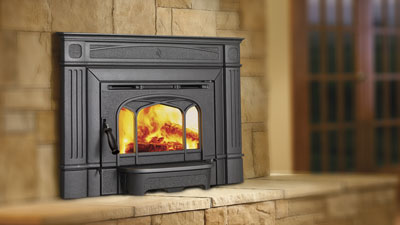
Installation Basics
Installing a cast iron stove insert typically starts with making sure your fireplace is the right size and type. Most inserts are designed for masonry fireplaces, though some can work with prefabricated units if they meet certain safety standards. Accurate measurements are essential to ensure a snug fit and proper venting.
Professional installation is strongly recommended. Inserts need a properly sized chimney liner to direct smoke and gases safely out of the home. The chimney must also be inspected and cleaned before the insert is installed to prevent creosote buildup and ensure proper airflow.
Once in place, the insert is connected to the liner and sealed within the firebox. A surround panel covers any gaps between the insert and the fireplace opening. After setup, the unit should be tested to confirm correct operation, airflow, and draft. When done right, this process creates a safe and efficient heating source.
Heating Performance and Efficiency
One of the main benefits of a cast iron stove insert is its heating performance. Many models can heat 1,000 to 2,500 square feet, depending on size and design. Inserts burn wood more completely than open fireplaces, producing more usable heat and fewer emissions. This efficiency is ideal for supplemental heat or even primary heating in small homes.
Some inserts come with built-in blowers that circulate warm air throughout the room. Others rely on natural convection, where the heat radiates from the cast iron body. Either way, the result is more consistent warmth that stays longer in your living space, especially compared to a standard open hearth.
Efficiency ratings for EPA-certified wood inserts often exceed 70%. This means less wood is required to produce the same amount of heat, saving you money over time. The cleaner burn also reduces creosote buildup in your chimney, lowering fire risk and extending the time between professional cleanings.
Maintenance and Upkeep
Keeping a cast iron insert running smoothly means regular maintenance. Ash should be cleared out regularly to prevent airflow blockage and keep combustion efficient. Most inserts have an ash pan for easy removal, making this part of upkeep simple and fast.
The glass on the front door may darken with use, especially if the wood isn’t fully seasoned. Cleaning it with a stove glass cleaner or a damp cloth dipped in ash can help restore visibility. Many inserts include air-wash features that direct air over the glass to reduce buildup while the fire is burning.
An annual inspection of the chimney and insert is essential. This check should include cleaning the flue liner, inspecting gaskets, and checking the condition of internal parts like the firebricks and baffles. Regular upkeep extends the life of your insert and keeps it working safely and efficiently.
Style and Customization
Cast iron inserts are available in a range of designs to match your home’s style. Some feature simple flat doors and clean lines for a more modern appearance. Others offer arched doors, raised patterns, and decorative accents that recall vintage stove styles or classic European fireplace designs.
Finish options typically include matte black, brushed nickel trims, or even enamel coatings in various colors. These choices allow homeowners to pick a look that complements their room. Whether you’re updating a rustic cabin or adding warmth to a minimalist space, there’s a cast iron insert that fits.
You can also customize the size and features. Optional accessories include trim kits, surround panels, fan kits, and thermostatic controls. These additions make the insert easier to use and better suited to your heating goals. With the right combination, your fireplace becomes both a focal point and a hard-working part of your home’s comfort system.
Wood Burning Stoves Inserts – Chimney Solutions Indiana
Hampton Wood Insert Hi2450
Wood Fireplace Inserts Lopi Stoves® Made in USA
cast iron fireplace inserts wood burning with blower wood
Hi2450 Non-Catalytic Cast Iron Wood Insert by Regency
Related Posts:
